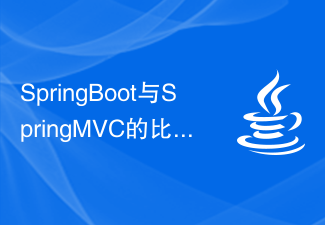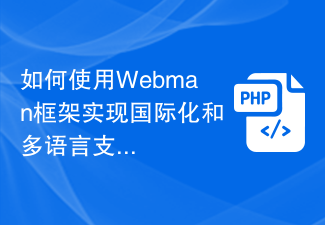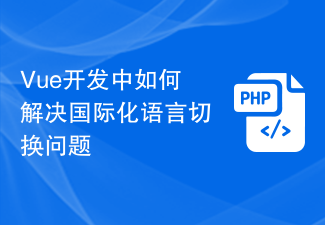在系列(7)中我们讲了数据的格式化显示,Spring在做格式化展示的时候已经做了国际化处理,那么如何将我们网站的其它内容(如菜单、标题等)做国际化处理呢?这就是本篇要将的内容—>国际化。
一.基于浏览器请求的国际化实现:
首先配置我们项目的springservlet-config.xml文件添加的内容如下:
<bean id="messageSource" class="org.springframework.context.support.ResourceBundleMessageSource"> <!-- 国际化信息所在的文件名 --> <property name="basename" value="messages" /> <!-- 如果在国际化资源文件中找不到对应代码的信息,就用这个代码作为名称 --> <property name="useCodeAsDefaultMessage" value="true" /> </bean>
在com.demo.web.controllers包中添加GlobalController.java内容如下:
package com.demo.web.controllers;import java.util.Date;import javax.servlet.http.HttpServletRequest;import org.springframework.stereotype.Controller;import org.springframework.ui.Model;import org.springframework.web.bind.annotation.RequestMapping;import org.springframework.web.bind.annotation.RequestMethod;import org.springframework.web.servlet.support.RequestContext;import com.demo.web.models.FormatModel;
@Controller
@RequestMapping(value = "/global")public class GlobalController {
@RequestMapping(value="/test", method = {RequestMethod.GET}) public String test(HttpServletRequest request,Model model){ if(!model.containsAttribute("contentModel")){
//从后台代码获取国际化信息
RequestContext requestContext = new RequestContext(request);
model.addAttribute("money", requestContext.getMessage("money"));
model.addAttribute("date", requestContext.getMessage("date"));
FormatModel formatModel=new FormatModel();
formatModel.setMoney(12345.678);
formatModel.setDate(new Date());
model.addAttribute("contentModel", formatModel);
} return "globaltest";
}
}
这里展示模型还用系列(7)中的作为演示。
在项目中的源文件夹resources中添加messages.properties、messages_zh_CN.properties、messages_en_US.properties三个文件,其中messages.properties、messages_zh_CN.properties里面的"money", "date",为中文,messages_en_US.properties里面的为英文。
在views文件夹中添加globaltest.jsp视图,内容如下:
<%@ page language="java" contentType="text/html; charset=UTF-8"
pageEncoding="UTF-8"%><!DOCTYPE html PUBLIC "-//W3C//DTD HTML 4.01 Transitional//EN" "http://www.w3.org/TR/html4/loose.dtd"><%@taglib prefix="spring" uri="http://www.php.cn/" %><html><head><meta http-equiv="Content-Type" content="text/html; charset=UTF-8"><title>Insert title here</title></head><body>
下面展示的是后台获取的国际化信息:<br/>
${money}<br/>
${date}<br/>
下面展示的是视图中直接绑定的国际化信息:<br/>
<spring:message code="money"/>:<br/>
<spring:eval expression="contentModel.money"></spring:eval><br/>
<spring:message code="date"/>:<br/>
<spring:eval expression="contentModel.date"></spring:eval><br/>
</body></html>
运行测试:

更改浏览器语言顺序,刷新页面:

二.基于Session的国际化实现:
在项目的springservlet-config.xml文件添加的内容如下(第一种时添加的内容要保留):
<mvc:interceptors> <!-- 国际化操作拦截器 如果采用基于(请求/Session/Cookie)则必需配置 --> <bean class="org.springframework.web.servlet.i18n.LocaleChangeInterceptor" /> </mvc:interceptors> <bean id="localeResolver" class="org.springframework.web.servlet.i18n.SessionLocaleResolver" />
更改globaltest.jsp视图为如下内容:
<%@ page language="java" contentType="text/html; charset=UTF-8"
pageEncoding="UTF-8"%><!DOCTYPE html PUBLIC "-//W3C//DTD HTML 4.01 Transitional//EN" "http://www.w3.org/TR/html4/loose.dtd"><%@taglib prefix="spring" uri="http://www.php.cn/" %><html><head><meta http-equiv="Content-Type" content="text/html; charset=UTF-8"><title>Insert title here</title></head><body>
<a href="test?langType=zh">中文</a> | <a href="test?langType=en">英文</a><br/>
下面展示的是后台获取的国际化信息:<br/>
${money}<br/>
${date}<br/>
下面展示的是视图中直接绑定的国际化信息:<br/>
<spring:message code="money"/>:<br/>
<spring:eval expression="contentModel.money"></spring:eval><br/>
<spring:message code="date"/>:<br/>
<spring:eval expression="contentModel.date"></spring:eval><br/>
</body></html>
更改GlobalController.java为如下内容:
package com.demo.web.controllers;import java.util.Date;import java.util.Locale;import javax.servlet.http.HttpServletRequest;import org.springframework.context.i18n.LocaleContextHolder;import org.springframework.stereotype.Controller;import org.springframework.ui.Model;import org.springframework.web.bind.annotation.RequestMapping;import org.springframework.web.bind.annotation.RequestMethod;import org.springframework.web.bind.annotation.RequestParam;import org.springframework.web.servlet.i18n.SessionLocaleResolver;import org.springframework.web.servlet.support.RequestContext;import com.demo.web.models.FormatModel;
@Controller
@RequestMapping(value = "/global")public class GlobalController {
@RequestMapping(value="/test", method = {RequestMethod.GET}) public String test(HttpServletRequest request,Model model, @RequestParam(value="langType", defaultValue="zh") String langType){ if(!model.containsAttribute("contentModel")){
if(langType.equals("zh")){
Locale locale = new Locale("zh", "CN");
request.getSession().setAttribute(SessionLocaleResolver.LOCALE_SESSION_ATTRIBUTE_NAME,locale);
} else if(langType.equals("en")){
Locale locale = new Locale("en", "US");
request.getSession().setAttribute(SessionLocaleResolver.LOCALE_SESSION_ATTRIBUTE_NAME,locale);
} else
request.getSession().setAttribute(SessionLocaleResolver.LOCALE_SESSION_ATTRIBUTE_NAME,LocaleContextHolder.getLocale());
//从后台代码获取国际化信息
RequestContext requestContext = new RequestContext(request);
model.addAttribute("money", requestContext.getMessage("money"));
model.addAttribute("date", requestContext.getMessage("date"));
FormatModel formatModel=new FormatModel();
formatModel.setMoney(12345.678);
formatModel.setDate(new Date());
model.addAttribute("contentModel", formatModel);
} return "globaltest";
}
}
运行测试:


三.基于Cookie的国际化实现:
把实现第二种方法时在项目的springservlet-config.xml文件中添加的
<bean id="localeResolver" class="org.springframework.web.servlet.i18n.SessionLocaleResolver" />
注释掉,并添加以下内容:
<bean id="localeResolver" class="org.springframework.web.servlet.i18n.CookieLocaleResolver" />
更改GlobalController.java为如下内容:
package com.demo.web.controllers;import java.util.Date;import java.util.Locale;import javax.servlet.http.HttpServletRequest;import javax.servlet.http.HttpServletResponse;import org.springframework.context.i18n.LocaleContextHolder;import org.springframework.stereotype.Controller;import org.springframework.ui.Model;import org.springframework.web.bind.annotation.RequestMapping;import org.springframework.web.bind.annotation.RequestMethod;import org.springframework.web.bind.annotation.RequestParam;import org.springframework.web.servlet.i18n.CookieLocaleResolver;//import org.springframework.web.servlet.i18n.SessionLocaleResolver;import org.springframework.web.servlet.support.RequestContext;import com.demo.web.models.FormatModel;
@Controller
@RequestMapping(value = "/global")public class GlobalController {
@RequestMapping(value="/test", method = {RequestMethod.GET}) public String test(HttpServletRequest request, HttpServletResponse response, Model model, @RequestParam(value="langType", defaultValue="zh") String langType){ if(!model.containsAttribute("contentModel")){
/*if(langType.equals("zh")){
Locale locale = new Locale("zh", "CN");
request.getSession().setAttribute(SessionLocaleResolver.LOCALE_SESSION_ATTRIBUTE_NAME,locale);
}
else if(langType.equals("en")){
Locale locale = new Locale("en", "US");
request.getSession().setAttribute(SessionLocaleResolver.LOCALE_SESSION_ATTRIBUTE_NAME,locale);
}
else
request.getSession().setAttribute(SessionLocaleResolver.LOCALE_SESSION_ATTRIBUTE_NAME,LocaleContextHolder.getLocale());*/
if(langType.equals("zh")){
Locale locale = new Locale("zh", "CN");
//request.getSession().setAttribute(SessionLocaleResolver.LOCALE_SESSION_ATTRIBUTE_NAME,locale);
(new CookieLocaleResolver()).setLocale (request, response, locale);
} else if(langType.equals("en")){
Locale locale = new Locale("en", "US");
//request.getSession().setAttribute(SessionLocaleResolver.LOCALE_SESSION_ATTRIBUTE_NAME,locale);
(new CookieLocaleResolver()).setLocale (request, response, locale);
} else
//request.getSession().setAttribute(SessionLocaleResolver.LOCALE_SESSION_ATTRIBUTE_NAME,LocaleContextHolder.getLocale());
(new CookieLocaleResolver()).setLocale (request, response, LocaleContextHolder.getLocale());
//从后台代码获取国际化信息
RequestContext requestContext = new RequestContext(request);
model.addAttribute("money", requestContext.getMessage("money"));
model.addAttribute("date", requestContext.getMessage("date"));
FormatModel formatModel=new FormatModel();
formatModel.setMoney(12345.678);
formatModel.setDate(new Date());
model.addAttribute("contentModel", formatModel);
} return "globaltest";
}
}
运行测试:


关于<bean id="localeResolver" class="org.springframework.web.servlet.i18n.CookieLocaleResolver" />3个属性的说明(可以都不设置而用其默认值):
<bean id="localeResolver" class="org.springframework.web.servlet.i18n.CookieLocaleResolver"> <!-- 设置cookieName名称,可以根据名称通过js来修改设置,也可以像上面演示的那样修改设置,默认的名称为 类名+LOCALE(即:org.springframework.web.servlet.i18n.CookieLocaleResolver.LOCALE--> <property name="cookieName" value="lang"/> <!-- 设置最大有效时间,如果是-1,则不存储,浏览器关闭后即失效,默认为Integer.MAX_INT--> <property name="cookieMaxAge" value="100000"> <!-- 设置cookie可见的地址,默认是“/”即对网站所有地址都是可见的,如果设为其它地址,则只有该地址或其后的地址才可见--> <property name="cookiePath" value="/"></bean>
四.基于URL请求的国际化的实现:
首先添加一个类,内容如下:
import java.util.Locale;import javax.servlet.http.HttpServletRequest;import javax.servlet.http.HttpServletResponse;import org.springframework.web.servlet.DispatcherServlet;import org.springframework.web.servlet.LocaleResolver;public class MyAcceptHeaderLocaleResolver extends AcceptHeaderLocaleResolver { private Locale myLocal; public Locale resolveLocale(HttpServletRequest request) { return myLocal;
}
public void setLocale(HttpServletRequest request, HttpServletResponse response, Locale locale) {
myLocal = locale;
}
}
然后把实现第二种方法时在项目的springservlet-config.xml文件中添加的
<bean id="localeResolver" class="org.springframework.web.servlet.i18n.SessionLocaleResolver" />
注释掉,并添加以下内容:
<bean id="localeResolver" class="xx.xxx.xxx.MyAcceptHeaderLocaleResolver"/>
“xx.xxx.xxx”是刚才添加的MyAcceptHeaderLocaleResolver 类所在的包名。
保存之后就可以在请求的URL后附上 locale=zh_CN 或 locale=en_US 如 http://www.php.cn/ 来改变语言了,具体这里不再做演示了。
国际化部分的内容到此结束。
以上就是SpringMVC学习系列(8) 之 国际化代码详细介绍的内容,更多相关内容请关注PHP中文网(www.php.cn)!
 使用Gin框架实现国际化和多语言支持功能Jun 23, 2023 am 11:07 AM
使用Gin框架实现国际化和多语言支持功能Jun 23, 2023 am 11:07 AM随着全球化的发展以及互联网的普及,越来越多的网站和应用开始致力于实现国际化和多语言支持功能,以满足不同人群的需求。为了实现这些功能,开发者需要使用一些先进的技术及框架。在本文中,我们将介绍如何使用Gin框架来实现国际化和多语言支持功能。Gin框架是一个轻量级的Web框架,由Go语言编写。它具有高效、易用和灵活等特点,已经成为了许多开发者的首选框架。除此之外,
 SpringBoot与SpringMVC的比较及差别分析Dec 29, 2023 am 11:02 AM
SpringBoot与SpringMVC的比较及差别分析Dec 29, 2023 am 11:02 AMSpringBoot和SpringMVC都是Java开发中常用的框架,但它们之间有一些明显的差异。本文将探究这两个框架的特点和用途,并对它们的差异进行比较。首先,我们来了解一下SpringBoot。SpringBoot是由Pivotal团队开发的,它旨在简化基于Spring框架的应用程序的创建和部署。它提供了一种快速、轻量级的方式来构建独立的、可执行
 使用FastAPI框架构建国际化的Web应用Sep 29, 2023 pm 03:53 PM
使用FastAPI框架构建国际化的Web应用Sep 29, 2023 pm 03:53 PM使用FastAPI框架构建国际化的Web应用FastAPI是一个高性能的PythonWeb框架,它结合了Python类型注解和性能较好的异步支持,使得开发Web应用变得更加简单、快速和可靠。在构建一个国际化的Web应用时,FastAPI提供了方便的工具和理念,可以使得应用能够轻松支持多种语言。下面我将给出一个具体的代码示例,介绍如何使用FastAPI框架构
 PHP8.0中的国际化库May 14, 2023 pm 05:51 PM
PHP8.0中的国际化库May 14, 2023 pm 05:51 PMPHP8.0中的国际化库:UnicodeCLDR和Intl扩展随着全球化的进程,开发跨语言、跨地域的应用程序变得越来越普遍。国际化是实现这一目标的重要组成部分。在PHP8.0中,引入了UnicodeCLDR和Intl扩展,这两个组件都为开发者提供了更好的国际化支持。UnicodeCLDRUnicodeCLDR(CommonLocaleDat
 如何使用Webman框架实现国际化和多语言支持?Jul 09, 2023 pm 03:51 PM
如何使用Webman框架实现国际化和多语言支持?Jul 09, 2023 pm 03:51 PM如今,随着互联网技术的不断发展,越来越多的网站和应用程序需要支持多语言和国际化。在Web开发中,使用框架可以极大地简化开发过程。本文将介绍如何使用Webman框架实现国际化和多语言支持,同时提供了一些代码示例。一、什么是Webman框架?Webman是一个基于PHP的轻量级框架,提供了丰富的功能和易于使用的工具,用于开发Web应用程序。其中之一就是国际化和多
 比较SpringBoot与SpringMVC的差异是什么?Dec 29, 2023 am 10:46 AM
比较SpringBoot与SpringMVC的差异是什么?Dec 29, 2023 am 10:46 AMSpringBoot与SpringMVC的不同之处在哪里?SpringBoot和SpringMVC是两个非常流行的Java开发框架,用于构建Web应用程序。尽管它们经常分别被使用,但它们之间的不同之处也是很明显的。首先,SpringBoot可以被看作是一个Spring框架的扩展或者增强版。它旨在简化Spring应用程序的初始化和配置过程,以帮助开发人
 Vue中如何使用路由实现国际化的多语言切换?Jul 22, 2023 pm 12:17 PM
Vue中如何使用路由实现国际化的多语言切换?Jul 22, 2023 pm 12:17 PMVue中如何使用路由实现国际化的多语言切换?在开发多语言网站时,我们的一个重要需求是能够根据用户选择的语言,实现网站内容的切换。Vue.js是一款流行的JavaScript框架,通过使用VueRouter插件,我们可以很方便地实现路由功能。在本文中,我将介绍如何使用路由实现Vue中的国际化多语言切换。首先,我们需要安装VueRouter插件。可以通过np
 Vue开发中如何解决国际化语言切换问题Jul 01, 2023 pm 01:33 PM
Vue开发中如何解决国际化语言切换问题Jul 01, 2023 pm 01:33 PMVue开发中如何解决国际化语言切换问题引言:在如今的全球化时代,应用程序的国际化变得越来越重要。为了让不同地区的用户能够更好地使用应用程序,我们需要对内容进行本地化,以适应不同语言和文化环境。对于使用Vue进行开发的应用程序来说,国际化是一个重要的考虑因素。本文将介绍如何在Vue开发中解决国际化语言切换问题,以实现应用程序的多语言支持。一、国际化与本地化在开


热AI工具

Undresser.AI Undress
人工智能驱动的应用程序,用于创建逼真的裸体照片

AI Clothes Remover
用于从照片中去除衣服的在线人工智能工具。

Undress AI Tool
免费脱衣服图片

Clothoff.io
AI脱衣机

AI Hentai Generator
免费生成ai无尽的。

热门文章

热工具

螳螂BT
Mantis是一个易于部署的基于Web的缺陷跟踪工具,用于帮助产品缺陷跟踪。它需要PHP、MySQL和一个Web服务器。请查看我们的演示和托管服务。

VSCode Windows 64位 下载
微软推出的免费、功能强大的一款IDE编辑器

Dreamweaver Mac版
视觉化网页开发工具

SublimeText3 英文版
推荐:为Win版本,支持代码提示!

记事本++7.3.1
好用且免费的代码编辑器





